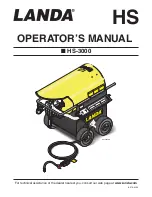
removal guide
Stain
White and
Fabrics
See
Control Setting Guide, Bleach on
7
Other Washable Fabrics
Same as white and
fabrics.
Adhesives
(Chewing Gum, etc.)
Rub with ice or immerse in very cold water. Use dull tool to
scrape
much adhesive or gum as possible. Sponge
with a safe
cleaning fluid,* then launder.
Apply undiluted liquid detergent. Rinse. If stain remains, bleach
according to Stain Removal Hint on opposite page. If color has
changed, you may be
to restore it by sponging with
ammonia.** Rinse thoroughly.
Soak in cold water, then launder in warm water. If stain remains,
bleach according to Stain Removal Hint on opposite page, launder.
Same as white and
fabrics
except use non-chlorine bleach.
Deodorants
Sponge or soak in cool water, then launder.
Blood
Soak in
water. Treat stain with a safe
cleaning fluid*;
undiluted
detergent, launder, dry. Bleach according
to Stain Removal Hint on opposite page, launder and dry.
Soak in cold water. Sponge with a safe dry
cleaning fluid.* Apply undiluted liquid
detergent. Launder in warm water.
Sponge with warm water. If stain remains,
apply warm glycerine,
stand 30 minutes
and rinse well, or sponge with a safe dry
cleaning fluid.* Launder.
Chocolate, Cream,
Ice Cream and Milk
Coffee and Tea
Without cream: Bleach according to Stain Removal Hint on
opposite page. Launder. With cream;
guide directions for
cream.
Treat stain with safe dry cleaning
undiluted liquid
detergent; launder and
dry. Bleach according to Stain Removal
Hint on opposite page.
Sponge with a safe dry cleaning fluid*
Then launder in warm detergent water.
Cosmetics: Eye Shadow,
Lipstick, Mascara, Liquid
or Pancake Makeup, Rouge,
Powder; Crayon; Grease,
Oil, Tar, Cod Liver
Sponge with warm water. Bleach remaining
stain with non-chlorine bleach.
Fresh Fruit, Fruit
Juices,
Wine, Vegetables, or Food
Coloring
Soak stain in cool water. If stain remains,
according to Stain
Removal Hint on opposite page, launder.
Sponge with warm water.
undiluted
Bleach remaining stain
with non-chlorine bleach, then launder.
Old
stains can seldom be removed.
Scorch can seldom be removed.
Same as white and
fabrics
except launder using non-chlorine bleach.
Grass, Foliage, Flowers,
Mildew, Scorch
undiluted
detergent. Launder. (Treat mildew spots
while they are fresh, before mold has a chance to weaken fabric.) If
either type stain remains, bleach according to Stain Removal Hint
on opposite page, launder. (Severe scorch cannot be removed. )
Fresh stains: Place stain face down on an absorbent towel and
sponge with dry cleaning
or use spray cleaner.
undiluted
detergent. Old stains; bleach according to Stain
Removal Hint on opposite page.
Ink, Ballpoint
Paint and Varnish
Same as white and
fabrics.
Soften with oil, lard or Vaseline, then sponge with turpentine or
banana oil. Launder in warm water.
Perspiration
Apply
detergent and launder in warm water. If
color has changed you may be able to restore it by treating with
vinegar.** If any stain remains, treat with safe
cleaning fluid* or bleach according to Stain Removal Hint on
opposite page, launder and dry.
Apply rust
using manufacturer’s directions. Rinse and
launder.
Launder in warm water. Rinse
Bleach
with non-chlorine bleach.
Same as white and
fabrics.
Rust
*Caution: Because cleaning
fluids tend to be toxic, be sure you are in a well ventilated room when using them. No cleaning fluid should be used unless user is
familiar with the limitations and required cautions (usually printed on label). Use extreme caution with flammable compounds.
-..
Under no circumstances should fabrics containing flammable materials (waxes, cleaning fluids, etc.) be washed in washer.
with
or acids such as vinegar and/or rust remover. Mixing
can produce a
gas
cause
Save and refer to garment manufacturers’ care labels.
19










































